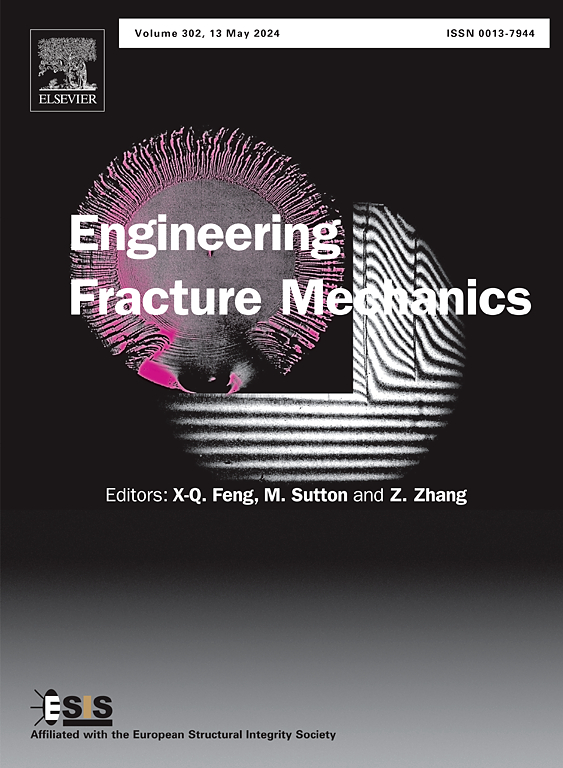Phase field fracture simulation of early-age concrete based on chemo-thermo-hygro-mechanical theoretical framework
IF 4.7
2区 工程技术
Q1 MECHANICS
引用次数: 0
Abstract
During the curing stage, early-age concrete is highly susceptible to multi-field coupling effects, resulting from chemical, thermal, and humidity changes influenced by hydration. These transformations lead to notable non-load-induced deformations, such as expansion and contraction. Under constrained conditions, this process generates substantial tensile stresses, making early-age concrete prone to cracking. The defects in the early stages of vital civil engineering structures and infrastructure pose a potential threat to their integrity, durability, and safety throughout their service life. To accurately predict the early-age crack resistance of early-age concrete, there is an urgent need for research on modeling and analyzing fracture behavior under chemo-thermo-hygro-mechanical fields. Recognizing this need, this paper incorporates the multi-field coupling phenomenon observed in early-age concrete and utilizes phase field theory to propose a fracture model within this theoretical framework. By applying the model to various numerical examples, it reveals the intricate mechanisms behind cracking induced by hydration, temperature, and humidity in early-age concrete. This enables precise simulation and prediction of the entire crack evolution process. Furthermore, our study highlights a dynamic interplay between structural and convective boundary conditions in crack development, demonstrating the model’s potential to predict complex crack patterns. Through this work, we’ve made significant progress in improving the prediction and control of early-age cracks in concrete structures. The insights gained from this research hold tremendous promise for advancing the field and ensuring the durability and integrity of infrastructure.
基于化学-热-水-力理论框架的早期混凝土相场断裂模拟
在养护阶段,早期混凝土极易受到水化影响下的化学、热、湿度变化所引起的多场耦合效应的影响。这些转变导致显著的非载荷引起的变形,如膨胀和收缩。在受约束的条件下,这一过程会产生大量的拉应力,使早期混凝土容易开裂。重要的土木工程结构和基础设施在早期阶段的缺陷对其整个使用寿命的完整性、耐久性和安全性构成潜在威胁。为了准确预测早期混凝土的早期抗裂性能,迫切需要对早期混凝土在化学-热-水-力学场作用下的断裂行为进行建模和分析研究。认识到这一需求,本文结合了早期混凝土中观察到的多场耦合现象,并利用相场理论在该理论框架内提出了断裂模型。通过将该模型应用于各种数值算例,揭示了早期混凝土水化、温度和湿度诱发开裂的复杂机制。这使得精确模拟和预测整个裂纹演化过程成为可能。此外,我们的研究强调了裂缝发展中结构和对流边界条件之间的动态相互作用,证明了该模型预测复杂裂缝模式的潜力。通过这项工作,我们在改善混凝土结构早期裂缝的预测和控制方面取得了重大进展。从这项研究中获得的见解为推进该领域并确保基础设施的耐久性和完整性带来了巨大的希望。
本文章由计算机程序翻译,如有差异,请以英文原文为准。
求助全文
约1分钟内获得全文
求助全文
来源期刊
CiteScore
8.70
自引率
13.00%
发文量
606
审稿时长
74 days
期刊介绍:
EFM covers a broad range of topics in fracture mechanics to be of interest and use to both researchers and practitioners. Contributions are welcome which address the fracture behavior of conventional engineering material systems as well as newly emerging material systems. Contributions on developments in the areas of mechanics and materials science strongly related to fracture mechanics are also welcome. Papers on fatigue are welcome if they treat the fatigue process using the methods of fracture mechanics.

 求助内容:
求助内容: 应助结果提醒方式:
应助结果提醒方式:


